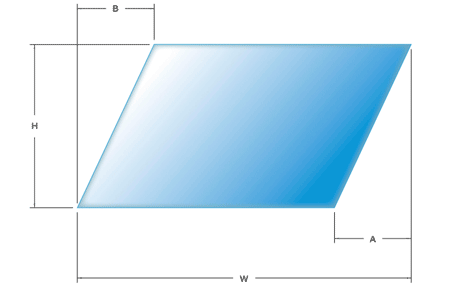
The year 7 teachers have this week been doing some work on the links between the area of a parallelogram and the area of a rectangle with the same dimensions. This has caused issues for a number of learners, most notably when trying to calculate the height of the shape. Spending time drawing and cutting up rectangles and parallelograms has proved fruitful but has taken longer than a lot of the teachers expected. We also found that the phrasing of the question also made a big difference to learners' attempts: "Does the rectangle fit inside the parallelogram?" led to a much different exercise than "Who can do it in the fewest cuts?".
Whilst observing a class who had been given a sheet of one 8cm x 4cm rectangle and three 8cm x 4cm parallelograms, I was struck by the necessity of there being some forcing of awareness to make sure that connections between concrete and abstract forms were made. Learners set about measuring the sides of both the rectangles and the parallelograms getting 32 square cms for the rectangle and other answers for the parallelograms. Learners then set about cutting up the rectangle to fit it over one of the parallelograms; some very proficiently. However, at this point I noticed that conversation had changed to who had done it in the fewest cuts and the implications of the rectangle fitting perfectly were not being appreciated.
It occured to me that some stages need to be moved through in order for there to be a deep understanding:
-Establish clearly the area of a rectangle (what it means and how to find it)
-Make predictions of what you think the areas of the parallelograms will be
-Use concrete forms to rearrange one or the other area
-establish what the implications from the concrete forms are
-think about whether the original predictions need to be altered in the light of the implications.
1 comment:
Hi Chris, I'm trying to introduce your SoW in my department. I have done many of your lessons and my kids love them and are learning so much. It is also changing the way I now look at other topics. Any tips on how to support my department? I don't want to write out detailed lesson plans for them because that takes away the whole acting on kid's ideas aspect. Do you think providing teachers with the suggestions and ideas from your book should be in hour experience sufficient for people to have a go? My staff is also worried about 'measuring' students' progress but I'm hoping they will see that the work the kids do speaks for itself. Are you writing a SoW for Y8 as well? Can't wait, let me know if you want me to try out some things.
Thanks, Marijke.
Post a Comment